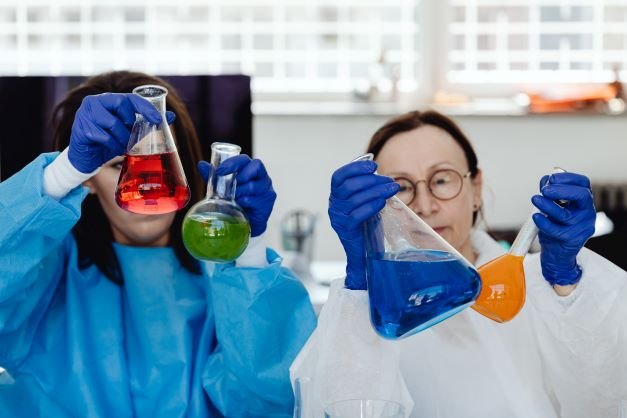As someone who has worked in various industries, I know the importance of using appropriate personal protective equipment (PPE). Among the most common types of PPE are gloves, which can provide a barrier between the skin and harmful elements. It’s essential to understand their effectiveness and limitations in protecting against chemicals. We’ll discuss whether latex gloves up to the task of providing chemical protection.
Understanding the Nature of Chemicals
Before we dive into the effectiveness of latex gloves, let’s first understand the nature of chemicals. Chemicals come in various forms and can have different levels of toxicity. Some chemicals can cause skin irritation, while others can be highly acidic and cause severe burns or even death.
Chemicals can also penetrate gloves in different ways. They can enter through pores, cuts, or pinholes in the glove material. Therefore, selecting the right type of glove is crucial to ensure maximum protection against chemicals.

The Porous Nature of Latex Gloves
Latex gloves are the most commonly used types of gloves due to their excellent tactile sensitivity, durability, and affordability. However, when it comes to chemical protection, latex gloves may not be the best option.
Latex gloves are porous, which means they have tiny holes that allow air and moisture to pass through. This feature is beneficial for gloves used in medical and food handling settings, as it allows the skin to breathe and prevents sweating. However, it also means that chemicals can penetrate the gloves and come in contact with the skin.
Chemicals that are highly reactive or acidic,can break down the latex material and create pinholes. Once the gloves have pinholes, chemicals can pass through and come in contact with the skin, causing irritation, chemical burns, or other health issues.
Chemicals that are Not Suitable for Latex Gloves
Given the porous nature of latex gloves, they are not recommended for handling strong oxidizing agents. These chemicals can break down the latex and create pinholes, allowing them to penetrate the gloves and come in contact with the skin.
Similarly, latex gloves are also unsuitable for handling organic solvents like toluene, acetone, and methanol. These solvents can dissolve the latex material and create holes, which can lead to skin exposure and absorption of the chemicals.
Latex Gloves for Handling Dilute Solutions
Despite their limitations, latex gloves can still be used for handling certain chemicals, such as dilute solutions of acids, bases, and salts. Latex gloves provide a barrier to protect the skin from splashes, spills, and other forms of exposure. However, it’s essential to note that the thickness of the glove material plays a vital role in its effectiveness in handling chemicals. Thicker gloves provide better protection against chemicals than thin gloves.
Chemical-Resistant Latex Gloves
It’s worth noting that not all latex gloves are created equal. Some gloves are treated with special coatings or chemical-resistant materials to improve their chemical resistance. These gloves are often called chemical-resistant latex gloves and can provide additional protection against certain chemicals.
When selecting latex gloves for chemical protection, it’s important to consider the manufacturer’s recommendations and select gloves that are appropriate for the specific chemicals being used. It’s also essential to inspect the gloves for any signs of wear or damage before use, as even small tears or punctures can compromise the glove’s effectiveness.
when it comes to chemical protection, latex gloves may not be up to the task for all chemicals. However, they can be suitable for handling certain chemicals when used correctly and with appropriate precautions. By understanding the limitations of latex gloves and selecting the right type of glove for the task at hand, you can ensure maximum protection against chemical exposure.



